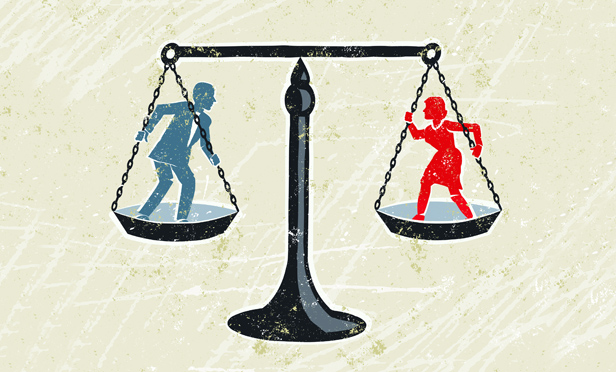When firm leaders at Birmingham-based Bradley Arant Boult Cummings began to consider last fall which associates were eligible for promotion to partner, a dozen junior lawyers fit the bill. None, it turned out, were women.
And so, in announcing last week that it had welcomed 12 of its attorneys to the firm’s partnership, Bradley Arant joined the growing ranks of Am Law 200 firms to promote new partner classes in 2014 made up entirely of men.
“We did not have any women in the eligible associate class,” says Kimberly Martin, who sits on Bradley Arant’s managing board and heads the firm’s Huntsville, Ala., office. “It’s not like we overlooked any women out of that eligible class. If there had been women in that class, they would have been considered.” Associates must have at least seven-and-a-half years of experience to be eligible, she says.
Earlier this month, The Am Law Daily reported that five other Am Law 200 firms—Cleary Gottlieb Steen & Hamilton; Edwards Wildman Palmer; Gibson, Dunn & Crutcher; Locke Lord; and Stroock & Stroock & Lavan—had failed to elevate any women to their partnerships this year. Compared to Bradley Arant, however, those firms had smaller new partner classes, with none of the five promoting more than seven lawyers. (Schulte Roth & Zabel also had no new female partners this year, though the firm promoted just one attorney.)
Martin called the lack of women in this year’s partner class an “anomaly” for Bradley Arant, a 440-attorney firm with offices in Alabama, Mississippi, Tennessee, North Carolina and Washington, D.C. She notes that 14 of the 58 lawyers that made partner during the previous five years, or 24 percent, were women. In Bradley Arant’s latest crop of first-year associates, she adds, 13 of 19 were women, and 18 women are among the firm lawyers potentially eligible to rise to partner within the next few years.
Ensuring that women advance through the ranks is a challenge across The Am Law 200, legal industry observers and law firm leaders say. As The Am Law Daily previously reported, the problems often arise well before lawyers are considered for partner.
Among the 58 Am Law 200 firms that have announced their 2014 promotions so far, 30.6 percent of those elevated were women—less than last year’s 34 percent and 2012′s 32 percent, according to an Am Law Daily analysis.
“We recognize that this is a challenge across the industry, and we’ve focused within the firm on developing policies and procedures to assist in the retention of women in many different ways,” Martin says. Those include a mentoring initiative named after Bradley Arant’s first female partner, Ellene Winn, and a sponsorship program.
Some firms this year have promoted women at rates equal to, or better than, those enjoyed by their male counterparts. Thirteen Am Law 200 firms had new partner classes that were at least 50 percent women, including McDermott WIll & Emery (12 women out of 23 promotions), Morrison & Foerster (five out of nine) and Littler Mendelson (nine out of 16).
So far, only one Am Law 200 firm appears to have a new partner class entirely composed of women: Munger, Tolles & Olson, which promoted two lawyers to its partnership ranks.






